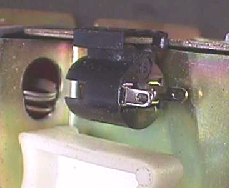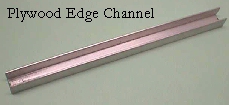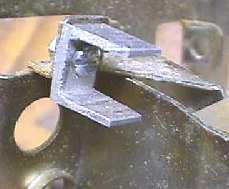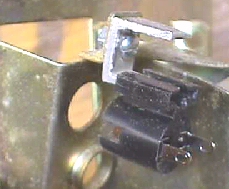

Coin door lamps & lamp sockets have been the source of many Qs over the past 8 years, and although I have addressed quite a few of them on my Help Page, this particular tip has not been covered & I think it's about time it was, so I'm jumping it to the top of the to-do-list.


These are two of the common types of lamp sockets used on the coin doors. The older type on the left was a constant source of problems after many years in the field because of the sockets loosening up enough for the terminals to spin. They were slightly better than the ones used on the old WMs coin doors, but nevertheless, a problem. Ops used to bend them all out of shape when replacing the lamps & I'm sure that didn't help in any way.
Then later on when they saw that the newer type, as pic'd on the right, was holding up much better, they would remove the old sockets & bend the tab straight back to slide on one of the newer sockets, as pic'd below.

The trouble with this was that the bending of the tab weakened it so much that they often times broke clean off :-( I located some small "L" brackets meant for shelving at a local lumber store (pre-Home D) that worked out perfect when fastened in place of the old bayonet socket. You could just slip the newer wedge socket right onto it aligning perfectly. As is the case with so many good things, they simply disappeared from the store's inventory and said to be no longer available. The store chain is no longer now :-(

|ramble| Sometime back in the day, I had read an article in one of the industry mags about using aluminum plywood channel over the piston rod of the pneumatic jukebox door lifters to prevent them from closing while your head was still inside them :-( Since my trusty short cue stick had once failed me, causing me to see many new stars that I hadn't seen before, I was keenly interested in this channel & ran out & purchased some to give it a try. I cut off a piece for a Rowe jukebox, opened the box, inserted the channel and it worked like a champ! I ended up stocking every size I could find & had cut pieces to the correct length for various brands & styles of jukes, labeling them as I went. I found many uses for this channel around the shop & in makeshifting parts that were hard to come by. This channel worked out well for this lamp socket mount, as well. |/ramble|

I never used a pattern for this, just cut them out as I needed them, but I'll put the basics here. First, I would drill a hole in the channel front about 3/16" from the end, centered, with a small step drill. I believe the first step is 1/8" if you're using a std drill bit. After the hole is drilled & any burrs polished away I would just slip the piece into the vise & cut off a piece of channel approximately 7/16" to 3/8"... always did it by eye & never had a problem, but you may want to get an exact measurement if you plan to try this.

I never bothered to cut off the upper unused portion, but I suppose you could take it a step further & remove it if you wanted to. If you don't have the original screw it can be fastened with a 1/4"x440 bolt & nut as pic'd above. The channel comes in various sizes to slip over the cut edges of plywood shelves... 1/4"... 3/8"... 1/2"... 3/4"... and the size used for this app is the 3/8". The channel can be found at Home Depot with some searching... seems no one that works there ever knows where, or what, this stuff is & it appears to be in a different location in every store :-(
I see that lots of you have trouble with the types of lamps & sockets, along with the voltage that is used to power them, so I'll insert a brief comment here on this subject. First the bayonet type is a lamp with a smooth cylinder base that has two projecting pins which fit into slots on the holder & when twisted a quarter turn, lock themselves into the socket. Bayonet lamps would be #44 or #47 when used in a 5 to 6VDC or 6.3VAC circuit, and when powered by 12 volts you'd need a lamp such as the #1813. The wedge type is as implied, a wedge lamp is pushed straight into the socket & has a chisel-shaped base, as opposed to, the cylindrical bayonet type. One loop of exposed wire to either side of the wedge base makes contact in the socket. Wedge lamps used in a 5 to 6VDC or 6.3VAC circuit would be #555 & in a 12 volt circuit you'd need #161 lamps.
As for voltage needed in your particular cab, even if there are no lamps in it & you have no manual or schematics, you can always measure the voltage right across the two wires that feed the lamp... right at the socket. If you own a game you should have a meter, but on the off chance that you don't, any meter should do the trick, even a small pocket-sized $5 analog meter from your local electronics store.